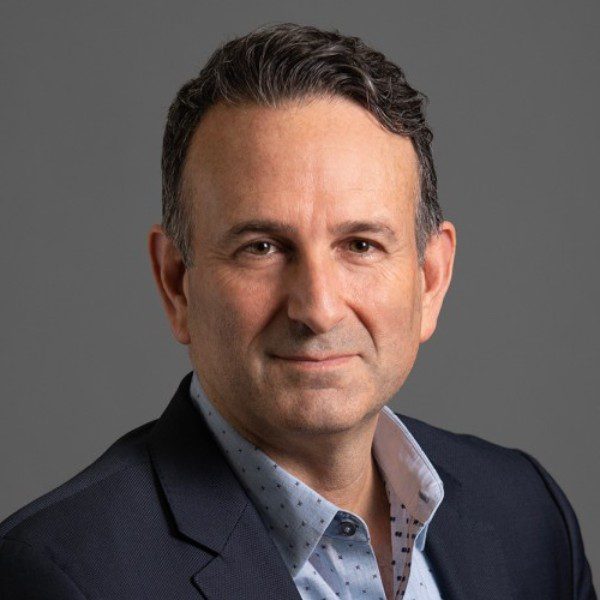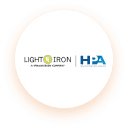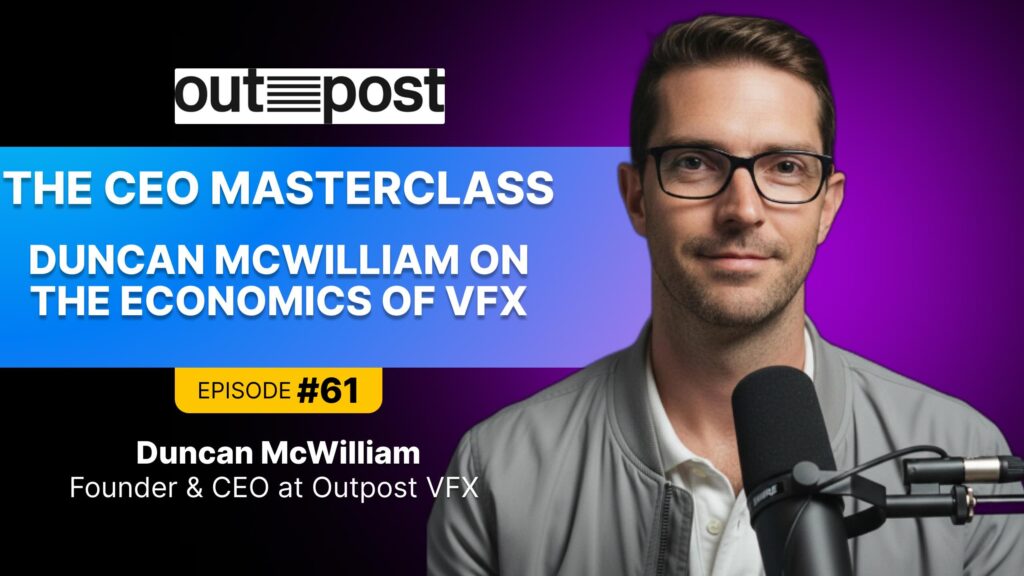Welcome to the Vitrina Podcast, where we dive into the most innovative and cutting-edge companies from within the global entertainment supply chain.
The third episode of Vitrina Podcast, we welcome Seth Hallen, Managing Director, Light Iron and President, Hollywood Professional Association (HPA) and also a Board Member, The Hollywood Partnership.
In this insightful podcast, Seth Hallen delves into his background, highlighting key industry shifts. The discussion covers the HPA Awards 2023, recent tumults in Hollywood, and the impact of remote workflows. Seth explores challenges arising from the Writer’s Guild and Actors’ Strike, emphasizing the significance of cloud-based collaborative environments and A.I. in production. The podcast delves into HPA’s Open Letter, Gen A.I., and provides an outlook on navigating challenges in 2024. A comprehensive exploration of industry dynamics and technological advancements, offering a compelling snapshot of the evolving landscape.
we have a challenged box-office, the pandemic kinda disrupted that in a big way, ancillary sales of DVD and Blu-ray…
Podcast Chapters
| 00:00 | Introduction |
| 01:06 | Seth’s background |
| 03:45 | HPA Awards 2023 |
| 05:44 | Recent Turmoils in Hollywood |
| 10:07 | Remote Workflows |
| 11:49 | Effect of Writer’s Guild and Actors’ Strike and Wars on Productions |
| 15:13 | Cloud-based Collaborative Environments & A.I. |
| 16:56 | Challenges Due to the Downturn in Productions |
| 25:37 | HPA’s Open Letter |
| 30:35 | Gen A.I. |
| 37:35 | Outlook on 2024 |
The strikes were a symptom of a bigger problem — which was this economically-challenged environment of content creation and consumption.
Seth Hallen brings over 30 years of experience in media and entertainment technology, specializing in post-production workflows, he leads teams across North America and Europe, achieving remarkable milestones. As the current President of the Hollywood Professional Association and a Board Member of The Hollywood Partnership, Seth’s advocacy for industry advancements and mentorship of emerging professionals reflect a deep dedication to shaping the future of content creation and distribution.
About Light Iron:
Light Iron, Panavision’s post-production division, provides state-of-the-art solutions to enhance the creative process. Light Iron delivers post-production workflows that minimize time, maximize image fidelity, and further the filmmaker’s artistic vision. Light Iron services feature films, episodic television, and commercial projects at over six locations across the United States and internationally.
Light Iron's Latest Work







- Comprehensive Post-Production Services: Light Iron offers a wide array of post-production services, including dailies, digital intermediate, HDR mastering, color correction, and grading, ensuring a one-stop solution for filmmakers.
- Industry-Leading Expertise: As a Panavision company, Light Iron brings top-notch expertise in visual effects (VFX), on-set supervision, and creative post-production, enhancing the overall quality of projects.
- Global Presence: With six locations across the United States, Light Iron provides convenient access to its high-quality post-production services, catering to diverse clients in feature films, episodic television, and commercial projects.
- Cutting-Edge Technology: Light Iron stays at the forefront of technological advancements, offering HDR finishing, remote dailies, digital grading, and cloud services. This commitment to innovation ensures clients benefit from the latest tools and techniques.
- Proven Track Record: The company’s impressive portfolio, including collaborations with major streaming platforms like Apple TV+, Netflix, and others, reflects its capability to deliver exceptional post-production workflows, making it a trusted choice for content creators.
Navigating the Tides of Change: A Conversation with Seth Hallen
This is a written version of the Vitrina podcast featuring Seth Hallen, HPA President and a prominent figure in the Hollywood post-production scene. This transcript captures our insightful discussion with Seth, where he shares his experiences and viewpoints on the evolving landscape of media and entertainment, particularly focusing on the impact of technological advancements and industry-wide challenges like the COVID-19 pandemic and strikes.
1. Vitrina: Seth, can you provide a detailed introduction to your roles and how they intersect with the broader Hollywood ecosystem?
Seth Hallen: Absolutely, I’ve spent roughly three decades in the media and entertainment sector, beginning with my academic pursuit in radio, television, and film at the University of Maryland. Post-education, my career journey has been quite diverse, venturing into building businesses across different sectors which equipped me with a robust understanding of business dynamics and management. Currently, I serve as the managing director at Light Iron, a post-production company owned by Panavision, and I am the president of the Hollywood Professional Association (HPA). These roles immerse me deeply in the technological and creative aspects of Hollywood, particularly focusing on empowering storytellers through advanced post-production capabilities.
2. Vitrina: Reflecting on the challenges of 2023, particularly with industry strikes, how did these impact the post-production community and how did the HPA respond?
Seth Hallen: 2023 was particularly challenging due to the strikes, impacting many aspects of Hollywood. The post-production community, like many others, faced significant disruptions. The HPA awards, coming right after the end of the actors’ strike, provided a much-needed platform for celebration and recognition of the hard work our community continues to put forth under such circumstances. HPA has been proactive, advocating for post-production professionals, ensuring their challenges and contributions are recognized and addressed in industry-wide discussions and relief efforts.
3. Vitrina: How did the COVID-19 pandemic reshape the operational frameworks within Hollywood, particularly in production and post-production?
Seth Hallen: The pandemic was a catalyst for massive operational changes across Hollywood. It accelerated the adoption of remote production technologies and health safety protocols that allowed productions to resume under safe conditions. For instance, productions that were halted resumed with strict health guidelines and embraced remote working tools, which allowed editors, directors, and other key personnel to collaborate effectively from different locations. This shift not only kept projects moving but also paved the way for a more flexible and resilient industry.
4. Vitrina: With the evolving dynamics in Hollywood due to technological advancements, how is HPA fostering innovation among its members?
Seth Hallen: HPA actively fosters innovation by tracking advancements in production and post-production technologies and facilitating knowledge-sharing among its members. We organize forums, workshops, and events where members can learn about the latest tools and techniques, such as AI and cloud-based workflows, which are revolutionizing how content is created and delivered. These initiatives help our community stay at the forefront of technological advancements and apply these innovations in their workflows.
5. Vitrina: As we approach 2024, what major themes and strategies are Light Iron and HPA focusing on to navigate the post-pandemic recovery?\
Seth Hallen: As we look to 2024, our focus is on resilience and strategic innovation. Light Iron and HPA are exploring how advanced technologies like AI can be integrated into daily operations to enhance efficiency and creativity. For example, we are looking into AI-driven tools for color grading and editing that can streamline the post-production process while still allowing creative professionals to maintain control over the artistic aspects of their projects.
6. Vitrina: Considering the significant disruptions caused by strikes and economic uncertainties, how is the post-production sector adapting its business models to sustain operations?
Seth Hallen: The post-production sector is increasingly adapting by diversifying its services and leveraging technology to reduce costs and improve efficiency. For instance, many companies are expanding their remote post-production offerings to cater to clients globally, reducing the need for physical presence and thereby minimizing overhead costs. Additionally, embracing flexible work models has allowed companies to scale their operations dynamically based on project demands.
7. Vitrina: What role does AI technology play in transforming traditional post-production processes, and what are the potential benefits and challenges?
Seth Hallen: AI technology is playing a transformative role in post-production by automating routine tasks and enhancing creative processes. For example, AI can be used for automated editing where it can quickly assemble rough cuts based on pre-set parameters, allowing editors to focus on fine-tuning and creative aspects. However, the challenge lies in integrating these technologies in a way that complements human creativity without displacing jobs, ensuring that AI serves as a tool that enhances, rather than replaces, human input.
8. Vitrina: How are collaborations within the industry evolving to address the collective challenges faced by Hollywood professionals?
Seth Hallen: Collaborations within the industry are becoming more crucial than ever, especially in addressing challenges like economic pressures and the need for sustainable practices. Production companies, post-production houses, and technology providers are increasingly partnering to develop integrated solutions that streamline production workflows and reduce environmental impacts. For instance, partnerships focused on developing cloud-based collaborative platforms are enabling more sustainable production practices that reduce the need for travel and physical resources.
9. Vitrina: Looking beyond 2024, what long-term impacts do you foresee from the recent shifts in Hollywood, especially related to production practices and employment models?
Seth Hallen: Long-term, I foresee a more flexible and technology-driven Hollywood, where remote and hybrid working models become the norm. This shift will likely lead to a more distributed workforce, opening up opportunities for talent from different geographical locations to participate in Hollywood projects. Additionally, the role of technology in automating some production and post-production tasks will necessitate a shift in skill sets required, with a greater emphasis on tech-savviness alongside creative skills.
10. Vitrina: Finally, as an influential leader in post-production, what advice would you offer to up-and-coming professionals aspiring to enter the industry during these transformative times?
Seth Hallen: For those aspiring to enter the industry, my advice is to embrace both technology and storytelling. Focus on acquiring a blend of technical and creative skills, as the future of Hollywood lies in the intersection of these domains. Stay adaptable, continually update your skill set, and be open to new ways of working. Networking and continuous learning are key, as they help you stay connected and relevant in an industry that is rapidly evolving.








